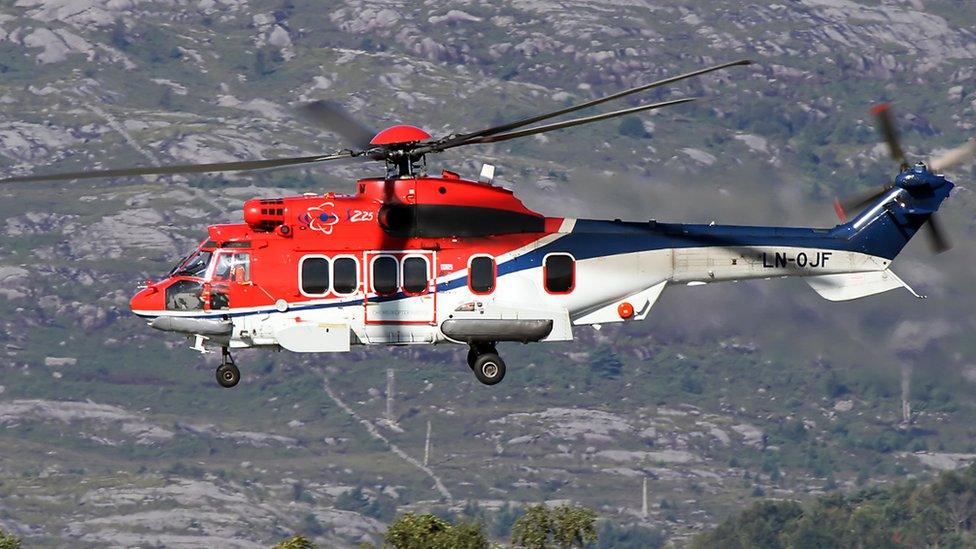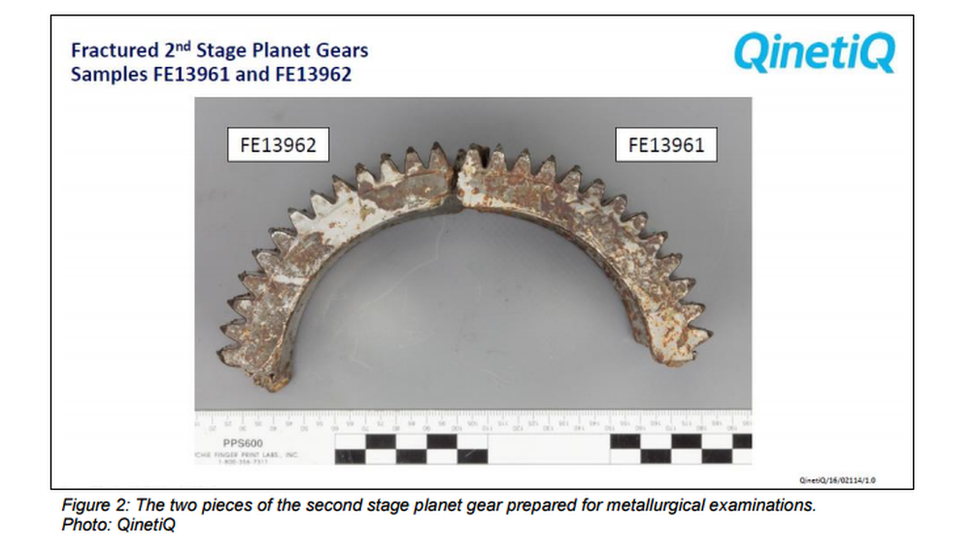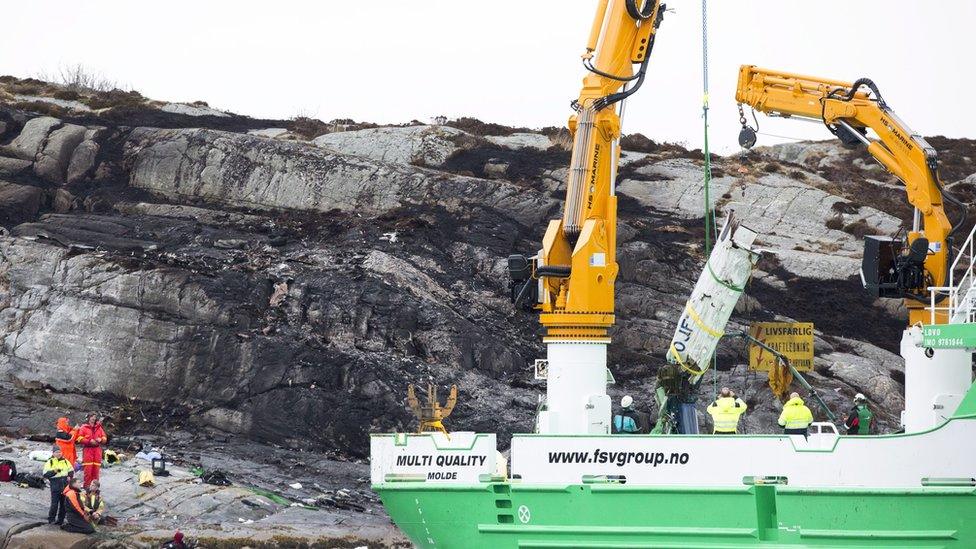'Metal fatigue' fault in Norway crash helicopter
- Published

The Super Puma helicopter which crashed off Norway
Air Accident investigators have found signs of metal fatigue in the gearbox of a helicopter that crashed off Norway, killing 13 people in April.
A report urges European aviation safety officials to take immediate action to ensure Super Puma H225 helicopters are safe.
The Norwegian Air Accident Board warned that current fault detection measures may be inadequate.
Iain Stuart from Aberdeenshire was among those killed in the crash.
Mr Stuart, 41, from Laurencekirk, worked for the oil field services company Halliburton.
The Airbus Super Puma was travelling from the Gullfaks field to Bergen when it crashed near the small island of Turoey on 29 April.
A preliminary report issued by the Accident Investigation Board Norway (AIBN) said it had found "features strongly consistent with fatigue" in parts of the main gearbox (MGB).

The report contains a photo of gearbox parts showing signs of fatigue
It added: "It cannot be ruled out that this signifies a possible safety issue that can affect other MGBs of the same type.
"The nature of the catastrophic failure of the LN-OJF main rotor system indicates that the current means to detect a failure in advance are not effective."
The Super Puma H225 helicopter is currently grounded in the UK and Norway but the manufacturer Airbus has lifted a recommendation that flights be suspended worldwide.
Airbus said at the time there was no evidence to link the crash with two previous incidents in Scotland involving the same model of helicopter.
An online petition calling for all Super Puma 225s to be "permanently removed from service" has attracted nearly 30,000 signatures.
- Published13 May 2016

- Published1 May 2016
